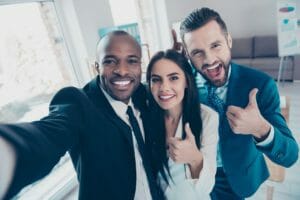As coronavirus cases have steadily increased over the past couple of weeks, it’s critical to discuss precautions that students, educators and parents can take to ensure students’ health and safety as they continue with in-person education and learning.
The Arizona Department of Health Services (ADHS) released its updated data-driven recommendations for safely returning to in-person instruction which include a detailed explanation of their benchmark data and lists two key components to safely opening school buildings for in-person instruction.

First is the quality of the school’s “how” plan, or its mitigation plan outlining the strategies it intends to implement to reduce the risk of spreading COVID-19 on campus.
Second is the “when,” or the level of spread taking place within the community. The degree of spread occurring within the community and each school’s mitigation plan are key elements in determining when it’s safe to open school doors. The ADHS defines community spread levels with minimal, moderate, and substantial thresholds – with quickly understood thresholds of “green”, “yellow”, and “red.”
Within each threshold are three benchmarks: cases per 100,000 individuals, testing positivity percentage and reported COVID-like illness.
GREEN
Less than 10 cases per 100,000 individuals, less than 5% testing positivity and less than 5% reported COVID-like illness falls in the minimal or “green” category and allows students to remain in traditional instructional environments.
YELLOW
Ten to 100 cases per 100,000 individuals, 5-10% testing positivity, and 5-10% reported COVID-like illness falls in the moderate or “yellow” category. Districts are advised to switch instruction methods to hybrid learning.
RED
More than 100 cases per 100,000 individuals, over 10% testing positivity and over 10% reported COVID-like illness falls in the substantial or “red” category. ADHS recommends moving from hybrid to completely online learning. However, the ADHS states that if any one of the three benchmarks moves to substantial or “red” for two or more weeks, districts should move to virtual learning.
While the nation’s rise in case numbers continues, there are several ways you can help steer your community away from the “red.”
Continue to maintain healthy environments and operations, promote behaviors that reduce the spread of infectious illness and prepare for when someone gets sick. Follow the basic CDC safety guidelines for protecting yourself and others. Wear a CDC approved mask, cover coughs and sneezes, wash and sanitize hands often, regularly clean and disinfect frequently touched items and surfaces, avoid close contact and monitor your family’s health – and your own – daily.
The ADHS continues to monitor the spread of COVID-19 closely. Comparing trends in students’ infection rates before and after the return to in-person school and other activities provides additional understanding about the infectivity of COVID-19. As schools continue with traditional classroom environments, it’s vital for each of us, our friends, family and community members to do our part to help reduce the risk of spread in our community.
Lane Tassin, M.D., is the chief medical officer for FastMed’s Western Region. FastMed operates over 100 clinics in Arizona, Texas and North Carolina that provide a broad range of acute/episodic and preventive healthcare services 365 days a year. FastMed recently announced a joint venture with HonorHealth to operate 30 clinics in Arizona.




